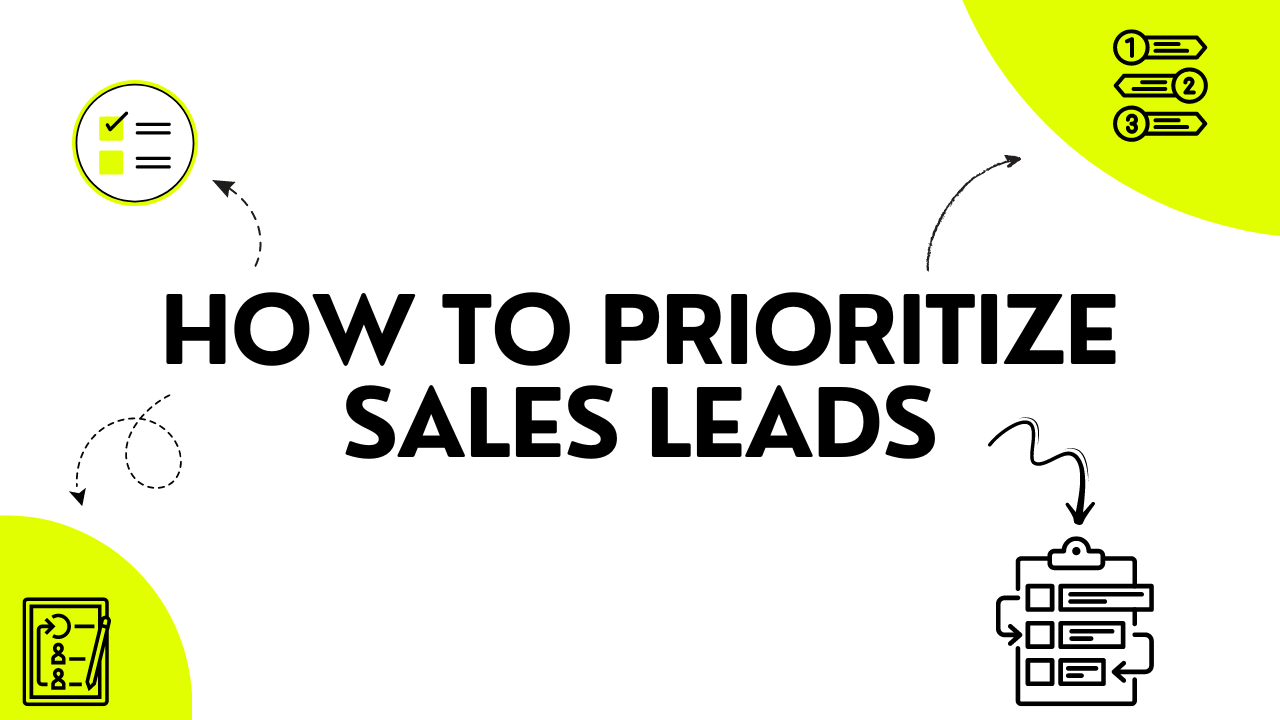Confronted with an ever-growing pile of sales leads, how do you determine where to focus for the best returns in 2023?
This is the dilemma facing today’s sales teams.
And, in a landscape where time is as valuable as the leads themselves, prioritizing effectively isn’t just beneficial, it’s essential.
Recognizing this, we’ve crafted an article that doesn’t just skim the surface but delves deep.
It’s a guide that lays out clear, practical strategies for sales lead prioritization, turning what often feels like an insurmountable task into an achievable goal.
Our focus?
To equip you with the insights and tools needed not just to manage, but to master your leads.
This isn’t about sorting through a heap of possibilities, it’s about strategically identifying and seizing the right opportunities, ensuring your sales efforts are as effective and impactful as possible.
Are you ready to transform your approach and master the art of prioritization in sales?
Let’s dive in!
Summary
In this insightful blog guide, we’ll cover the essentials of sales lead prioritization.
You’ll learn how to sift through a multitude of leads and identify the ones that truly matter.
We’ll delve into the importance of differentiating between potential leads and practical opportunities, discuss various prioritization techniques, and explore how to utilize them for maximum sales impact.
From understanding key concepts like MQL, SQL, and PQL, to mastering sophisticated strategies, this blog is your roadmap to not just managing, but mastering your sales pipeline.
Get ready to refine your approach and achieve your 2023 sales goals with precision and confidence.
Let’s get started!
What is Sales Leads Prioritization?
If you’ve ever delved into the concept of sales lead prioritization you’ve likely come across a basic definition:
Sales lead prioritization is the process of distinguishing high-quality leads from less promising ones, enabling you or your sales team to focus on those most likely to become customers.
However, this explanation barely scratches the surface.
Sales lead prioritization is more than just separating wheat from chaff.
It’s about recognizing that not every potential lead is worth the same in terms of time and resources.
Some leads might seem promising on paper, but they could be a misfit for your current product or service.
Others might not show immediate signs of conversion but hold immense long-term potential.
In essence, sales leads prioritization is a strategic balancing act.
It’s about aligning your sales efforts with leads that don’t just have a high chance of conversion but are also the right fit for your business at the right time.
This means considering factors like:
– the lead’s readiness to buy,
– their alignment with your product or service,
– and the potential value they bring to your business, both now and in the future.
So, while the traditional definition of prioritizing leads based on their likelihood to convert holds true, the real skill lies in understanding the broader context of each lead, and, in this article, we’ll show you how!
Why is it important to Prioritize Sales Leads?
Now that we’ve covered what sales lead prioritization truly entails, let’s dive into why it’s sales lead prioritization is a critical component of your sales strategy in 2023.
Understanding the importance of this process is key to transforming your approach to sales and ensuring that your efforts are targeted and effective.
We’re not just talking about increasing numbers; we’re talking about making smarter, more impactful decisions that drive real results.
Let’s explore the reasons why prioritizing your sales leads isn’t just a good practice, but a vital one for the health and growth of your business.
Reason #1 Enhanced Efficiency and Time Management
The first and perhaps most obvious benefit of prioritizing sales leads is improved efficiency and better time management.
When you focus on the most promising leads, you’re essentially streamlining your company sales process.
This isn’t about doing more in less time; it’s about doing the right things with the time you have.
By targeting leads that are more likely to convert, you reduce the hours spent on chasing uncertain prospects, thus improving resource management.
This means your sales team can allocate their time and energy more effectively. It’s like having a map that highlights the shortest and most rewarding route.
Moreover, this approach helps in setting clear priorities.
Sales teams can easily get overwhelmed by a high volume of leads.
*Worthwhile read: How to Keep track of sales leads?*
Prioritization acts as a filter, separating the high-potential leads from the rest.
This clarity not only saves your salespeople time but also reduces the mental clutter of handling too many leads at once.
All in all prioritizing sales leads is about smart work, not just hard work.
It’s about making every hour count by focusing on leads that align with your sales goals and have a higher probability of success.
Reason #2 Increased Conversion Rates and Revenue Growth
It’s no secret that the end game of any sales effort is revenue growth.
In the quest for this growth, how you prioritize your sales leads can play a pivotal role.
When you zero in on leads with a higher likelihood to convert, it’s a natural outcome that your conversion rates will see an uptick.
But the benefits don’t stop at just immediate sales.
By focusing your efforts on leads that are an exact match with your Ideal Customer Profile (ICP), you’re not just reaping immediate gains.
You’re investing in the long-term growth of your company.
Customers who align closely with your ICP are more likely to be satisfied with your product or service, leading to repeat business and potentially higher lifetime value.
Moreover, these well-matched customers often become advocates for your brand.
They’re likely to refer others, amplifying your sales efforts through the most powerful marketing tool – word of mouth.
This isn’t just about adding numbers to your sales, it’s about building a base of loyal customers who contribute to a sustainable, growing revenue stream.
In essence, effective sales lead prioritization is a catalyst for both immediate sales success and long-term revenue growth.
It’s a strategy that pays dividends now and lays the groundwork for future prosperity.
Reason #3 Improved Customer Experience and Relationships
Prioritizing sales leads goes beyond numbers and conversion rates; it significantly enhances customer experience and relationships.
When you focus on leads that align well with your offerings, you’re more likely to meet, or even exceed, their expectations.
This is because these clients find what they’re looking for in your product, resulting in a positive experience right from the first contact.
Tailoring your approach to cater to the most suitable leads also allows for more personalized interactions.
You’re not just selling a product, you’re providing a solution that resonates with their specific needs and challenges.
This level of personalization fosters trust and loyalty, key ingredients in building strong, lasting customer relationships.
Furthermore, satisfied customers are likely to share their positive experiences.
In today’s interconnected world, a single recommendation or positive review can have a far-reaching impact.
By prioritizing leads that are a good fit, you’re not just securing a sale, you’re potentially generating a network of brand advocates.
In this way, effective lead prioritization doesn’t just boost your sales metrics; it elevates the entire customer journey, strengthening the bond between your company and your clients.
This approach lays the foundation for a customer-centric culture, crucial in today’s competitive marketplace.
What are MQL, SQL and PQL?
Navigating the world of sales leads involves understanding various stages of customer interest and readiness to buy.
Central to this process are three key terms: MQL, SQL, and PQL.
Each represents a different level of lead qualification and requires a unique approach to generate effective results.
An MQL, or Marketing Qualified Lead, is essentially at the starting gate.
These leads have shown initial interest in what your company offers, typically through inbound tactics.
It could be as simple as them engaging with your website content or subscribing to an email newsletter.
They’re on your radar but are likely still exploring their options and aren’t quite ready to make a purchase.
Shifting gears, we come to SQLs or Sales Qualified Leads.
These leads have moved beyond just showing interest, they’re actively considering making a purchase.
Indications like reaching out for more detailed information, requesting a demo or inquiring about pricing place them in this category.
SQLs are the leads that your sales team zeroes in on, as they show clear signs of purchase intent, often marked in the CRM system.
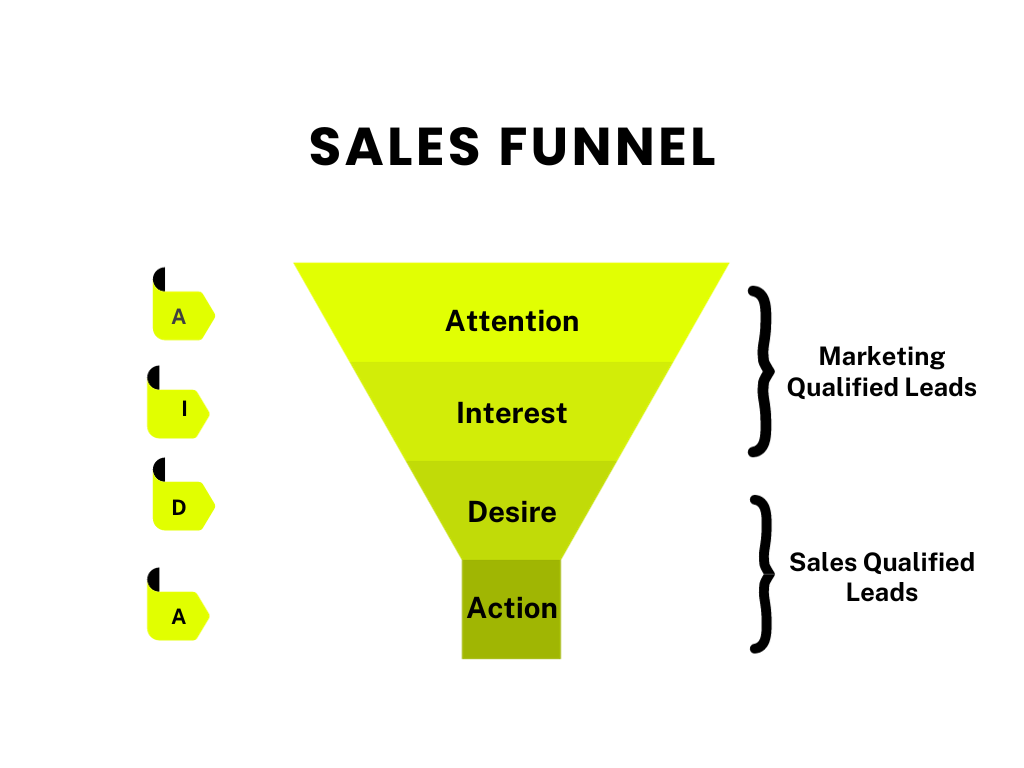
Lastly, there’s the PQL or Product Qualified Lead.
This term is particularly relevant in the software or SaaS sector.
PQLs are leads who have experienced your product firsthand, usually through a free trial or a basic version and are considering an upgrade to a more comprehensive offering.
Their firsthand experience with your product makes them prime candidates for becoming paying clients.
Understanding these categories – MQL, SQL, and PQL – is essential in sales lead prioritization.
It’s about recognizing where a lead is in their buying journey and tailoring your approach accordingly.
This ensures that your sales efforts are as effective as possible, engaging each lead at the right time with the right message.
What techniques to use for Sales Leads Prioritization and why?
Understanding the ‘what‘ and ‘why’ of sales lead prioritization is just the beginning.
The next step is mastering the ‘how’.
There are several effective techniques that can significantly enhance your lead prioritization process, each with its unique advantages and, in this section, we’ll walk you through them.
We’ll explore why each technique is important and how it can be applied to optimize your sales efforts.
This isn’t just about following a set of steps, it’s about choosing the right tools to build a more targeted, efficient, and successful sales strategy.
Technique #1 Lead Scoring
Lead scoring is a fundamental technique in the arsenal of sales lead prioritization.
At its core, lead scoring is about assigning a numerical value to each lead based on various criteria, such as their behavior, engagement level, demographic information, and their overall fit with your target profile.
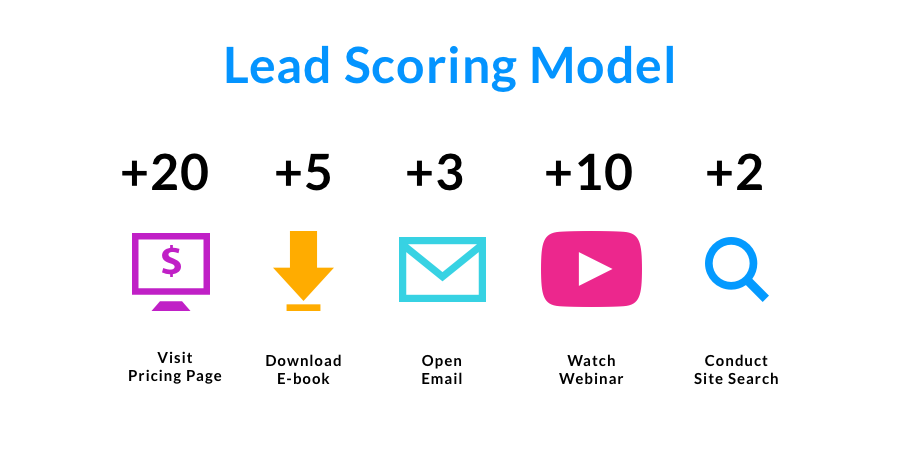
The beauty of lead scoring lies in its simplicity and adaptability. You can customize the scoring criteria to match your specific business needs and market dynamics.
For instance, a lead who frequently visits your pricing page might score higher than someone who just skims a few blog posts.
Similarly, a lead from a demographic closely aligned with your ideal customer profile could receive a higher score than one from a less relevant segment.
The real power of lead scoring is its ability to quantify the abstract.
It turns the often subjective process of evaluating leads into something concrete and measurable.
The criteria for scoring can and should vary greatly depending on your specific business model and sales process, however, very important thing to keep in mind is: it’s not just about activity, it’s about relevance too.
A lead’s job position, company size, or industry could be just as telling as their online behavior.
So, by customizing your model to reflect these nuances, you can ensure that your team is focusing on leads that are not only interested but are also a good match for what you’re offering.
Moreover, lead scoring isn’t a static process.
It evolves with your business, allowing for continuous refinement and adjustment.
As you gain more insights into what makes prospects more likely to convert, you can adjust the criteria to reflect these new learnings, ensuring that your lead prioritization remains sharp and effective.
Implementing a lead scoring system requires an initial investment of time to set up the criteria and scoring thresholds.
However, once in place, it acts as an automated guide, streamlining the lead qualification process and enabling your sales team to act more swiftly and confidently.
Technique #2 Lead Segmentation
Lead segmentation in the context of prioritizing sales leads is about strategically grouping your scored leads.
Think of it as organizing your leads into distinct buckets, each representing a different level of priority.
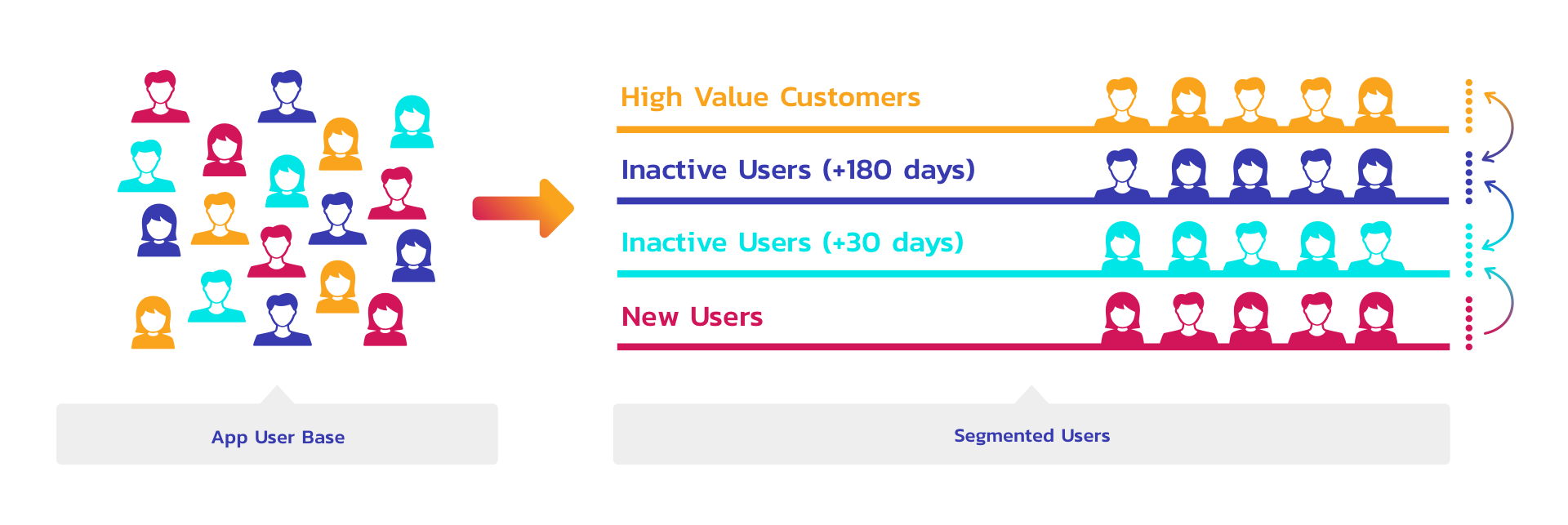
This isn’t about preparing different sales strategies or pitches, but about efficiently identifying which leads deserve the most immediate and intensive focus based on their potential value and readiness.
For example, one segment might include leads that score highly in terms of readiness to buy and align perfectly with your ICP.
These leads are not only ready to make a decision but are also a perfect fit for what you’re offering.
They should naturally be at the top of your priority list.
Another segment could be leads that show high potential but might require more nurturing and management before they are ready to convert.
These leads are valuable but may not require immediate, aggressive pursuit, thus placed in a lower priority segment.
Segmentation in this stage of the sales process is paramount because it helps you allocate your time and resources more effectively.
By understanding which leads are most likely to convert and bring value to your business, you can focus your salespeople efforts where they have the highest chance of yielding results.
It’s about being smart with your resources, ensuring that you’re dedicating attention to the leads that will drive your business forward.
Technique #3 BANT Framework
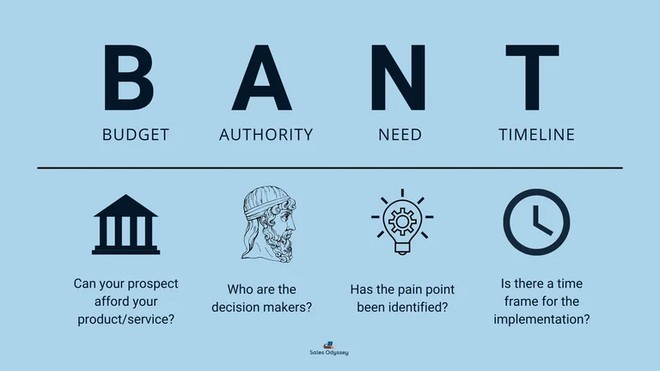
The BANT Framework is a time-tested approach in sales lead prioritization.
Standing for Budget, Authority, Need, and Timeline, this framework provides a structured way to evaluate the potential of a sales lead.
Starting with ‘Budget,’ this criterion assesses whether the lead has the financial resources to purchase your products or services.
It’s about confirming that the lead can afford what you’re offering, which is a fundamental aspect of lead qualification.
‘Authority’ refers to the lead’s decision-making power.
Does the individual you’re communicating with have the authority to make a purchase decision, or are they an influencer who can sway the decision-makers?
Understanding this helps in determining how much time and effort to invest in the lead.
‘Need’ is about the lead’s requirement for your product.
This involves gauging how well what you offer aligns with their problems or goals.
Prospect with a clear, defined need for your solution is naturally a higher priority.
Finally, ‘Timeline’ considers the urgency of the lead’s need.
A lead ready to make a decision immediately or in the near future is more valuable than one with a distant or undefined timeline.
Applying the BANT Framework helps in prioritizing leads by giving a clear picture of their potential to become a customer.
It’s a straightforward, yet powerful way to gauge where a lead stands in terms of purchase readiness and fit for your products or services.
This method allows for a more focused approach, directing your resources to prospects that have a higher likelihood of progressing through the sales funnel effectively, allowing you to generate revenue more quickly.
Technique #4 Predictive Analytics
Predictive analytics stands out as a forward-looking technique in the realm of sales lead prioritization.
Leveraging data, statistical algorithms, and machine learning techniques, this approach predicts future behavior and trends based on historical data.
In simple terms, predictive analytics helps you foresee which prospects are most likely to convert, allowing for more informed prioritization.
The core of predictive analytics lies in its ability to process vast amounts of data to identify patterns and correlations that might not be evident at first glance.
For instance, it can analyze past successful conversions to pinpoint common characteristics among those prospects and common inbound and outbound strategies that generated them.
These characteristics can include demographic details, online behavior, engagement patterns, way of generation (inbound or outbound) and more.
What makes predictive analytics particularly powerful is its dynamic nature.
Unlike static models, it continuously evolves and adapts as it consumes more data.
This means that your lead prioritization strategy gets smarter and more accurate over time.
Implementing predictive analytics requires a solid foundation of data and the right tools (CRMs and predictive analytics software) to analyze that data.
While setting up such a CRM system might seem daunting, the payoff is significant.
It provides a high-tech approach to lead prioritization, transforming raw data into actionable insights.
In a nutshell, predictive analytics offers a sophisticated, data-driven way to anticipate which leads are most likely to bear fruit.
This not only improves the efficiency of your salespeople but also improves the overall effectiveness of your sales strategy.
With predictive analytics, you’re not just reacting to the market; you’re staying one step ahead.
Technique #5 Engagement Tracking
Engagement tracking brings a dynamic layer to sales lead prioritization, focusing on how leads interact with your brand.
This technique is all about monitoring and analyzing the touchpoints where potential customers engage with your content, products, or services.
Here’s what you need to know to leverage it to prioritize sales leads:
Types of Engagement: This includes inbound actions like website visits, email opens, content downloads, and social media interactions. Each action tells a story about the lead’s interest and where they are in the buying process.
Scoring Engagement: Assign scores to different types of engagement. For instance, downloading a white paper from your website might score higher than simply liking a social media post or opening an email.
Patterns of Interest: Look for patterns that indicate increasing or waning interest. Regular interaction over time is a strong signal of a lead moving closer to a purchase decision.
This is more than a tally of interactions; it’s an insight into the lead’s behavior and interest level.
This approach allows you to:
- Prioritize Responsive Leads: Focus on leads that show consistent and growing engagement, indicating readiness to move forward.
- Tailor Follow-Ups: Use engagement data to inform how you follow up. A lead frequently checking product pages might be ripe for a demo offer, while someone engaging with educational content may need more nurturing.
Remember, not all engagement is created equal.
A single high-value interaction can be more telling than several low-level engagements.
All in all, engagement tracking offers a real-time pulse on your leads’ interests and intentions.
By integrating this technique into your prospect prioritization process, you can ensure that your attention is focused on the leads most engaged and ready to progress in their buying journey.
Technique #6 ICP Matching
ICP Matching is a technique in sales lead prioritization that aligns leads with your Ideal Customer Profile (ICP).
This method ensures that you’re focusing on leads that not only have the potential to buy but also perfectly fit the customer profile you’ve identified as most suitable for your product or service.
1. Defining Your ICP: Begin by outlining a clear and detailed profile of your ideal customer, considering factors like industry, company size, budget, and specific needs.
2. Matching Leads to ICP: Evaluate each lead against your ICP criteria. The closer a lead’s characteristics align with your ICP, the higher they should be on your priority list.
3. Evaluating Overall Fit: Beyond just a surface-level match, assess how well each lead’s requirements, ambitions, and challenges resonate with what you offer.
ICP Matching goes beyond basic lead qualification.
It ensures that your sales efforts are targeted at those who not only have the potential to become customers but are also most likely to become your most valuable customers.
This technique helps in building a solid customer base that is in sync with your business offering, leading to enhanced customer satisfaction, loyalty, and long-term business growth.
Incorporating ICP Matching into your prioritization process means that your salespeople are not just chasing leads, they’re strategically engaging with prospects who are the right fit.
This alignment increases the chances of successful conversions and establishes a more sustainable and profitable customer relationship.
By focusing on your ideal customers, you ensure that every sales effort counts, aligning your resources with the most rewarding opportunities.
Technique #7 Sales and Marketing Alignment
While not a traditional technique in the strict sense for prioritizing leads, aligning your sales and marketing teams is a crucial step in effectively managing and prioritizing leads.
This alignment ensures that both teams work towards a common goal with a unified strategy, leading to more efficient prospect prioritization and management.
- Unified Messaging: Ensuring that both sales and marketing are conveying the same message to potential leads creates consistency. This consistency helps in nurturing prospects more effectively as they move through the sales funnel.
- Shared Insights: Marketing teams often have a wealth of data about leads and initial engagement. Sharing this information with sales can provide deeper insights into lead behavior, allowing for more informed prioritization.
- Feedback Loop: Sales teams have direct interaction with prospects and understand their concerns and objections. Feeding this information back to marketing can refine lead generation strategies and targeting, attracting better-qualified leads.
The concept here is synergy.
When sales and marketing are aligned, the entire process of lead generation and conversion becomes more seamless.
This alignment helps in identifying which leads are most likely to convert, based on combined insights from both teams’ interactions and data analysis.
In practice, sales and marketing alignment for lead prioritization means that marketing efforts bring in higher-quality prospects that match the sales team’s criteria for prioritization.
This collaborative approach not only streamlines the prospect prioritization process but also enhances overall prospect quality, increasing the efficiency and effectiveness of your sales efforts.
It’s about working smarter, not harder, by leveraging the strengths and insights of both teams to target and prioritize leads that have the highest potential for conversion and value addition.
How Can ZeroIn Help You Reach Your Sales Goals?
In the quest to prioritize sales leads effectively, ZeroIn emerges as a practical tool that can significantly streamline your process.
As a business email finder and data export tool for LinkedIn, ZeroIn offers specific features that align well with the strategies we’ve discussed in this article.
1. Reliable Data for Lead Scoring and Segmentation
ZeroIn provides clean, verified, and actionable data, which is essential for accurate lead scoring and segmentation.
With data gathered directly from LinkedIn, enriched with business emails verified in real-time, you can score and segment your leads with confidence, knowing the information is current and relevant.
2. GDPR Compliance for Ethical Data Collection
With data privacy being a top concern, ZeroIn’s alignment with GDPR ensures that your data collection is both ethical and compliant.
This compliance gives you peace of mind and maintains the integrity of your lead prioritization process.
3. High Accuracy for Dependable Outreach
The tool’s 98% accuracy rate means you can rely on the data for your outreach and marketing campaigns.
This level of accuracy is crucial in ensuring that your time and efforts are invested in leads that are most likely to convert.
4. Extensive Data Points for Informed Decision Making
With 26 different data points on leads and companies, ZeroIn gives you a comprehensive understanding of your prospects.
This depth of information is invaluable for fine-tuning your prioritization criteria and tailoring your approach to each lead.
5. Access to a Large Database for Expansive Reach
ZeroIn’s database, boasting over 200 million contacts, widens your net in the search for high-quality leads.
This extensive reach is a significant advantage in identifying and prioritizing prospects that are the best fit for your business.
In essence, ZeroIn equips you with the data and insights necessary to effectively prioritize your sales leads.
By integrating ZeroIn’s capabilities with your sales strategy, you can enhance the efficiency and accuracy of your lead prioritization efforts, paving the way for more targeted outreach and ultimately, achieving your sales goals.
Conclusion
As we wrap up this comprehensive blog guide, it’s clear that mastering the art of sales lead prioritization is not just a skill but a necessity in today’s competitive market.
We’ve journeyed through the what, why, and how of prioritizing sales leads, unpacking strategies that can transform your sales process from a hit-or-miss game to a targeted, efficient operation.
From the nuanced understanding of what sales lead prioritization truly involves to the exploration of various effective techniques like lead scoring, segmentation, and the BANT framework, this guide has armed you with the knowledge to make informed, strategic decisions.
We’ve seen how predictive analytics and engagement tracking can offer deeper insights into lead behavior, and how aligning your sales and marketing efforts can streamline the entire process.
Moreover, we discussed how a tool like ZeroIn, with its accurate and GDPR-compliant data, can be instrumental in enhancing your lead prioritization efforts.
By providing reliable, verified data, ZeroIn helps in sharpening your focus on the leads that matter most, ensuring your sales efforts are as impactful as possible.
Now, as you step forward, remember that prioritizing sales leads is about more than just organizing contacts, it’s about smartly allocating your resources, understanding your prospects deeply, and building relationships that lead to growth and success.
With the strategies and insights from this guide, you’re well-equipped to elevate your sales lead prioritization and achieve your sales goals with confidence and precision.
Take this knowledge, tailor it to your unique sales landscape, and watch as your prioritization becomes not just a task, but the cornerstone of your success.
The question now isn’t if you can transform your leads into victories – it’s when you’ll start.
So, when will you start?
FAQs
What is Sales Leads Prioritization?
Sales lead prioritization is the process of evaluating and ranking leads based on their likelihood to convert and their alignment with your business’s needs and timing.
It involves assessing factors like a lead’s readiness to buy, how well they fit with your product or service, and their potential long-term value to your company.
This strategic approach ensures that your sales efforts are focused on the most promising opportunities.
Why is it important to Prioritize Sales Leads?
Prioritizing sales leads is crucial because it enhances efficiency and time management, increases conversion rates and revenue growth, and improves customer experience and relationships.
By focusing on the most promising leads, sales teams can allocate their resources more effectively, target customers who are a better fit for their products, and build stronger, lasting relationships with clients.
This strategic approach leads to more impactful sales efforts and contributes to the overall health and growth of a business.
What are MQL, SQL and PQL?
MQL, SQL, and PQL are terms that represent different stages of a lead’s readiness to buy:
An MQL (Marketing Qualified Lead) has shown initial interest, like engaging with content or subscribing to a newsletter, but isn’t ready to buy yet.
An SQL (Sales Qualified Lead) indicates readiness to purchase, often demonstrated by actions like requesting a demo or more detailed information.
A PQL (Product Qualified Lead), common in the SaaS sector, has used your product, typically through a trial, and shows interest in upgrading.
These categories help in tailoring sales approaches according to the lead’s stage in the buying journey.
What techniques to use for Sales Leads Prioritization and why?
Effective sales lead prioritization involves a combination of techniques, each serving a specific purpose in identifying and focusing on the most promising leads:
1. Lead Scoring: Assigns numerical values to leads based on their behavior and engagement, helping identify those most likely to convert.
2. Lead Segmentation: Groups scored leads into categories based on specific characteristics, allowing for tailored approaches.
3. BANT Framework: Evaluates leads based on Budget, Authority, Need, and Timeline, providing a structured qualification process.
4. Predictive Analytics: Uses data and machine learning to forecast which prospects are most likely to convert.
5. Engagement Tracking: Monitors how leads interact with your brand, identifying those showing consistent and growing interest.
6. ICP Matching: Aligns prospects with your Ideal Customer Profile, focusing on those that best fit your business model.
7. Sales and Marketing Alignment: Ensures both teams work collaboratively, sharing insights to attract and prioritize high-quality leads.
Each of these techniques contributes to a more efficient and effective lead prioritization process, ensuring your sales efforts are focused on leads with the highest potential for conversion and growth.
How can ZeroIn help you reach your Sales Goals?
ZeroIn, business email finder and data export tool for LinkedIn, can significantly enhance your sales lead prioritization efforts by providing:
- Reliable Data: Clean, verified, and actionable data from LinkedIn for accurate lead scoring and segmentation.
- GDPR Compliance: Ensures ethical and compliant data collection.
- High Accuracy Rate: Offers 98% accuracy for dependable outreach and marketing campaigns.
- Extensive Data Points: 26 data points on leads and companies for informed decision-making.
- Large Database Access: Over 200 million contacts for a wider reach in finding high-quality prospects.
These features enable you to efficiently prioritize leads, tailor your outreach, and increase the likelihood of achieving your sales goals.
